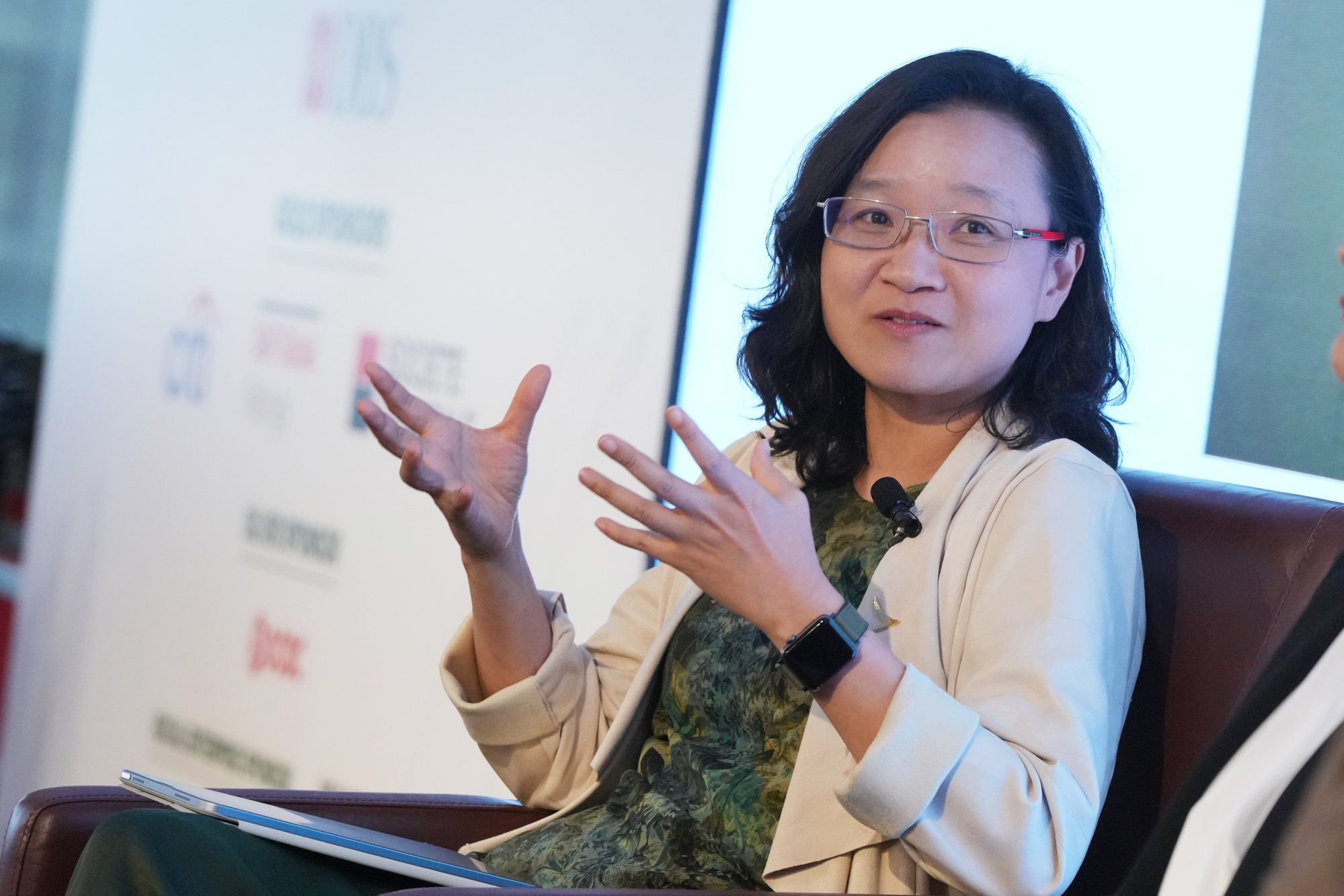More government pressure is needed for Hong Kong’s aviation sector to meet its climate goals, even as uptake of sustainable aviation fuel (SAF) has risen from a low base thanks to corporate support, according to Cathay Pacific.
“Regulators have a key role to play for a level playing field, so that every [player] is doing the right thing for society,” Grace Cheung, the flagship carrier’s general manager of sustainability, told the Asia Securities Industry and Financial Markets Association’s sustainable finance conference on Wednesday.
“If we leave it to the market, every company will wait for their competitors to make the first move.”
Do you have questions about the biggest topics and trends from around the world? Get the answers with SCMP Knowledge, our new platform of curated content with explainers, FAQs, analyses and infographics brought to you by our award-winning team.
Aviation is difficult to decarbonise due to the industry’s long innovation cycles, the prioritisation of safe operations and the high costs of key technologies, consultancy McKinsey said last year. SAF is three to five times more expensive than conventional jet fuel, according to industry media outlet AvBuyer.
Policies are needed to grow SAF demand and encourage the development of a supply chain financed through grants, loans and a revenue mechanism, Cheung said.
In his policy address last month, Chief Executive John Lee Ka-chiu committed to formulating a plan to establish an SAF supply chain and to setting a usage target for Hong Kong by next year to cater to rising demand from international airlines.

Cathay aims to have SAF make up 10 per cent of its fuel consumption by 2030, compared with 0.03 per cent last year, which Cheung attributed to limited global supply.
The 2030 target is achievable based on SAF mandates or targets that governments globally are expected to implement, she told the Post.
“Regulated SAF usage policies have been announced in the European Union, Britain and Singapore, while policy discussions are ongoing in South Korea, Japan, Indonesia, Thailand, Malaysia and mainland China,” she said, adding that she is encouraged by rising financial support from Cathay customers that have their own emissions targets.
Some 15 customers have joined Cathay’s corporate SAF programme so far this year, up from eight last year, she said. They agreed to pay for the additional costs of 2,600 tonnes of SAF usage this year. This can eliminate 8,000 tonnes of carbon dioxide emissions, more than triple the volume a year ago.
The participants include German logistics firm DB Schenker, which in July made a commitment to pay the cost premium for 878 tonnes of SAF in Cathay’s largest deal so far.
Other transport sector participants include Airport Authority Hong Kong, Taiwan’s Dimerco Express Group, Swiss-based Kuehne+Nagel and Japan’s Kintetsu World Express and Yusen Logistics.
Financial-sector partners include asset managers Julius Baer and EQT, insurer AIA Group, Standard Chartered Bank and Cathay’s parent firm Swire Pacific.
Air travel accounts for two-thirds of Julius Baer’s operational emissions, and the company aims to cut business air travel emissions by 30 per cent by next year from 2019 levels, a spokeswoman said.
In May 2021, Cathay committed to achieving net zero emissions by 2050 and to buying 1.1 million tonnes of SAF over 10 years to cover 2 per cent of its projected needs. It also invested a decade ago in US SAF maker Fulcrum BioEnergy to secure supply.
SAF, which can be made from algae or waste from agricultural, forestry, food and municipal sources, can cut life-cycle carbon emissions by up to 80 per cent compared with petroleum-based jet fuel.
Fulcrum, which raised more than US$1 billion from investors, filed for bankruptcy protection in September after years of delays in the commissioning of its municipal waste-to-biofuel plant and a subsequent shutdown caused by technical problems.
This highlighted the nascent sector’s risks. Yet even though SAF only accounts for 0.4 per cent of global jet fuel use, Mark Harper, group head of sustainability at John Swire & Sons (HK), Cathay’s controlling shareholder, said he is optimistic about future growth.
“What gives me hope is that SAF technology advancement didn’t follow a linear curve but an S-curve, and over the last three years we have seen an annual doubling of supply capacity,” he told think-tank Civic Exchange’s sustainable finance seminar on Tuesday.
More from South China Morning Post:
- Hong Kong’s aviation future hinges on sustainable fuel policies, experts say
- DB Schenker joins Cathay’s sustainable fuel programme, pledging to cut carbon emissions
- Rivals Cathay Pacific, Singapore Airlines team up to source sustainable aviation fuel
- From hotpot waste to jets: Cathay Pacific joins Hong Kong group in diving into sustainable aviation fuel
- Sustainable aviation fuel: why policies are key to unlocking vast growth potential in greener flying in Asia and China
For the latest news from the South China Morning Post download our mobile app. Copyright 2024.





